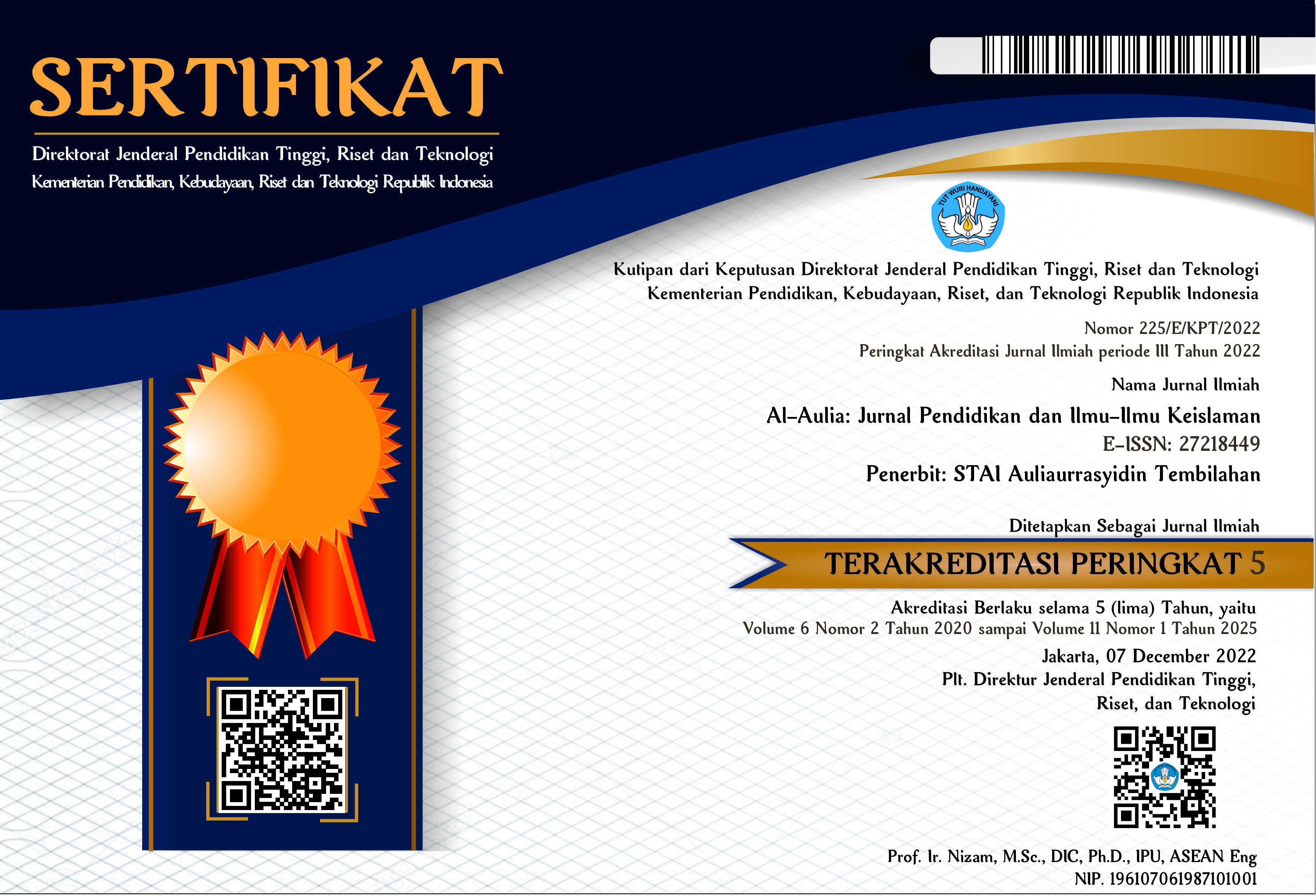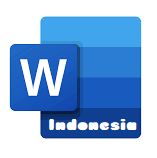Evaluasi Pendidikan dalam Perspektif Hadits Rasulullah SAW (Afektif dan Psikomotorik)
Keywords:
Education, Evaluation, HadithAbstract
Education is a social engineering designed as a conscious and responsible effort to maintain, guide and direct the growth and development of students' lives so that they have true meaning and purpose in life. The educational process is designed with a specific purpose to achieve the desired changes in each student. Islamic education can be understood as education based on the values of Islamic teachings as stated in the Qur'an and al-Hadith as well as in the thoughts of the scholars and in the historical practice of Muslims. In this paper, the author will present matters relating to the evaluation of Islamic education, from the meaning, objectives and functions, principles, goals, and types.
References
Al Syaibani, Omar Muhammad al-Thoumy al-Syaibani, (1987). Falsafah Pendidikan Islam, terj. Hasan Langgulung, Jakarta: Bulan Bintang.
Al-Rasyidin dkk, (2005). Filsafat Pendidikan Islam Pendekatan Historis, Teoritis dan Praktis, Jakarta: Ciputat Press.
Arifin, M, (1996). Ilmu Pendidikan Islam: Tinjauan Teoritis dan Praktis Berdasarkan Pendekatan Interdisipliner, Jakarta: Bumi Aksara
Arikunto, (1990). Suharsimi Arikunto, Dasar-dasar Evaluasi Pendidikan, Jakarta: Bumi Aksara.
As-Sijistani, Imam Abu Dawud, Sunan Abu Dawud, Beirut: Maktab ad-Dirasat wa Al-Buhuts fi Dar Al Fikr.
Azra, Azyumardi, (1999). Pendidikan Islam; Tradisi dan Modernisasi Menuju Milennium Baru, Jakarta: PT Logis.
Falah, Ahmad, (2010). Hadits Tarbawi, Kudus: Nora Media Enterprise.
Hamalik, (1982). Oemar, Pengajaran Unit, Bandung: Alumni.
Hamami, Tasman, (2008). Pemikiran Pendidikan Islam: Transformasi Kurikulum Pendidikan Agama Islam di Sekolah Umum, Yogyakarta: Pustaka Book Publizer.
Lidwa 9 imam, (Aplikasi Hadist).
Mujib, Abdul dan Jusuf Mudzakkir, (2008). Ilmu Pendidikan Islam, Jakarta: Kencana Prenada Media Group.
Nata, Abudin, (2010). Ilmu Pendidikan Islam, Jakarta: Kencana Prenada Media Group.
____________, (2005). Filsafat Pendidikan Islam, Jakarta: Gaya Media Pratama.
____________, (2008). Manajemen Pendidikan, Mengatasi Kelemahan Pendidikan Islam di Indonesia, Jakarta: Prenada Media Group.
, (1997). Filsafat Pendidikan Islam, Jakarta: Logos Wacana Ilmu.
Ramayulis dan Samsul Nizar, (2009). Filsafat Pendidikan Islam: Telaah Sistem Pendidikan dan Pemikiran Para Tokohnya, Jakarta: Kalam Mulia.
Ramayulis, (2008). Ilmu Pendidikan Islam, Jakarta:Kalam Mulia.
_________, (2002). Metodologi Pendidikan Agama Islam, Jakarta: Kalam Mulia.
Salim, Moh. Haitami dan Syamsul Kurniawan, (2012). Studi Ilmu Pendidikan Islam, Yogyakarta: Ar-Ruzz Media.
Siregar, Maragustam, (2016). Filsafat Pendidikan Islam: Menuju Pembentukan Karakter Menghadapi Arus Global, Yogyakarta: Kurnia Kalam Semesta.
Sukiman, (2010). Pengembangan Sistem Evaluasi PAI, Yogyakarta: Fakultas Tarbiyah dan Keguruan UIN Sunan Kalijaga Yogyakarta.
Wiyani, Novan Ardy dan Barnawi, (2012). Ilmu Pendidikan Islam, Yogyakarta: Ar Ruzz Media, 2012.
Yusuf, Kadar M, (2013). Tafsir Tarbawi: Pesan-Pesan Al Quran tentang Pendidikan, Jakarta: Amzah, 2013.
Downloads
Published
Issue
Section
License
Authors who publish with this journal agree to the following terms:
1. Copyright on any article is retained by the author(s).
2. The author grants the journal, right of first publication with the work simultaneously licensed under a Creative Commons Attribution License that allows others to share the work with an acknowledgment of the work’s authorship and initial publication in this journal.
3. Authors are able to enter into separate, additional contractual arrangements for the non-exclusive distribution of the journal’s published version of the work (e.g., post it to an institutional repository or publish it in a book), with an acknowledgment of its initial publication in this journal.
4. Authors are permitted and encouraged to post their work online (e.g., in institutional repositories or on their website) prior to and during the submission process, as it can lead to productive exchanges, as well as earlier and greater citation of published work.
5. The article and any associated published material is distributed under the Creative Commons Attribution-ShareAlike 4.0 International License







